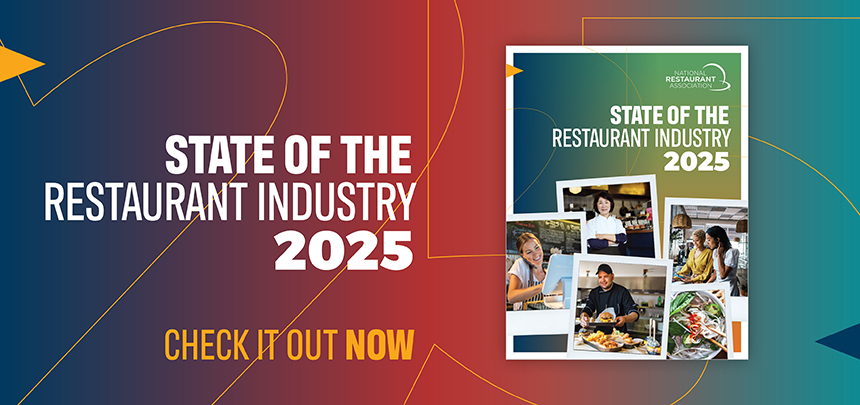Restaurant expectations vary with different age groups

Gen Z adults and millennials are more optimistic in general than older consumers, our research finds.
It comes as no surprise, perhaps, that the most recent generations of young adults, those who have grown up with the Internet and smart phones, are more comfortable with technology such as mobile ordering apps, digital wallets, and order kiosks in restaurants than older adults.
According to our 2023 State of the Restaurant Industry report, while the majority of restaurant patrons—young and old—have many common expectations from the restaurants they frequent, the disparity between them—Gen Z adults (18-26) and millennials (27-42) on one hand, and Gen Xers (43-58) and baby boomers (59+) on the other—could be a good indication of future trends.
Many of the services restaurants adopted during the pandemic just to keep their doors open—delivery, takeout, alcohol-to-go, and more—now provide consumers with convenience. Some 66% of all adults, for example, say they’re more likely to order takeout than they did before the pandemic. But that number rises to 7 in 10 Gen Z adults and millennials who say they’re more likely to order food to-go today; only slightly more than half of boomers say the same.
Statistics for delivery are similar, with 55% of all adults saying they’re more likely to have restaurant food delivered today than prior to the pandemic. That rises to 60% for Gen Z and 64% for millennials and declines to 44% of boomers who say they’re likely order more food for delivery today.
Table service and tech
About two-thirds of all adults say they would choose a restaurant that offers traditional service from employees over one that uses tech for ordering and bill payment. However, these decisions vary significantly by age group. Baby boomers (80%) and Gen Xers (71%) were much more likely to pick a restaurant that offers traditional service. Millennials and Gen Z adults are roughly split between the two options.
When it comes to using technology for paying the bill, about three-fourths of all adults say they would be likely to order and pay for food or beverages using a restaurant website or using contactless or mobile payment options.
Most consumers would also order and pay using smartphone apps, computer tablets at the table, and self-service electronic kiosks. But while 82% of Gen Z and three in four Gen Xers and millennials would use a digital wallet to pay, only a third of boomers would.
Other emerging technology trends that Gen Z adults and millennials are more open to than older adults are drones, robots, self-driving delivery cars, variable pricing, and staffing drive-through or walk-up takeout windows with a live but remote order-taker via a screen.
Restaurant experience beyond a meal
Gen Z adults and millennials also are far more likely than Gen Xers and especially boomers to be open to experience a restaurant in non-traditional ways. Two-thirds of the younger generations say they’d be likely to participate in chef’s table or tasting dinners compared to half of Gen Xers and a third of boomers.
They also say they’d be more likely to order a multi-course meal for takeout or delivery; make meals at home with meal kits from restaurants; sign up for meal subscriptions; purchase produce, pantry items, or packaged retail food from a restaurant; or buy restaurant swag such as hats, sweatshirts, and T-shirts.
Younger consumers also are more likely than their elders to visit restaurants that use environmentally friendly or sustainable business practices and food ingredients.
Finally, Gen Z adults and millennials are more optimistic in general than older consumers, with about half saying they expect their personal finances to improve this year, compared with only a third of baby boomers.
Find a complete copy of the report here. The 2023 State of the Restaurant Industry report is free to members; $349 to nonmembers.


